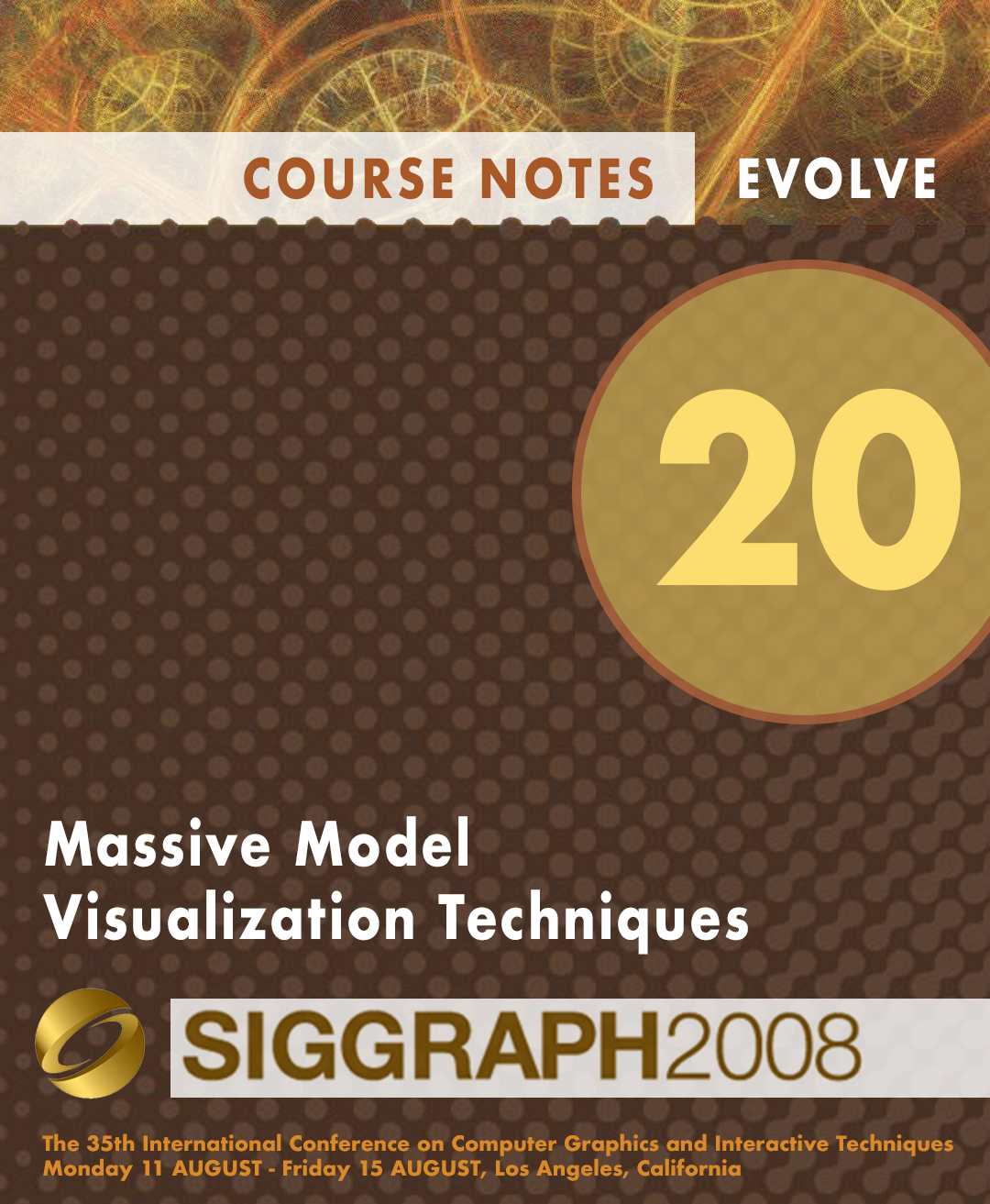“Massive Model Visualization Techniques” by Kasik, Dietrich, Gobbetti, Marton, Manocha, et al. …
Conference:
Type(s):
Entry Number: 20
Title:
- Massive Model Visualization Techniques
Course Organizer(s):
Presenter(s)/Author(s):
Abstract:
Prerequisites
• General knowledge of the difference between ray tracing and rasterization.
• Familiarity with computing system architecture, display list concepts, graphics hardware accelerators, and parallel processing.
Who Should Attend
This course is intended for users of complex models and practitioners who build real-time 3D applications. The techniques are applicable to any community that commonly reduces model detail (e.g., games) or works only with model chunks (e.g., CAD). We contrast the strategies needed for real-time in a limited computing environment.
Description
Massive model visualization seeks to provide users the ability to interact with 3D models of almost unlimited size and complexity – mainly with respect to geometry but increasingly in terms of appearance, illumination, visibility, and other features that create the illusion of photo realism.
Numerous domains create highly complex digital models. Examples include industrial CAD models of airplanes, ships, production plants, and buildings; geographic information systems; oil and gas exploration; medical imaging; scanned 3D models; un-organized information spaces; and high-end scientific simulations.
The digital models may contain millions, even billions of 3D primitives. The primitives include points, surfaces, voxels, and higher dimensional data forms. Each primitive is often associated with a complex set of parameters. We can store the data, post inquiries to search engines to analyze it, produce reports (including still pictures and films), and derive other information about it. We have just not been able to see it interactively in real time.
Interactive performance involves satisfying a person that new frames are created fast enough to convince the visual system that movement is continuous. Developing a solution that makes a person think that interaction is happening in real-time requires a system-level solution. In short, addressing only one or two parts of the system may solve the problem in a way that will continue to break when users want to visualize different types of datasets.
This course offers details about the system issues involved in developing solutions for massive model visualization. Included are in-depth discussions of hidden surface algorithms and their strengths and limitations, level-of-detail approaches, parallel programming paradigms, and optimizing disk access and memory utilization.




